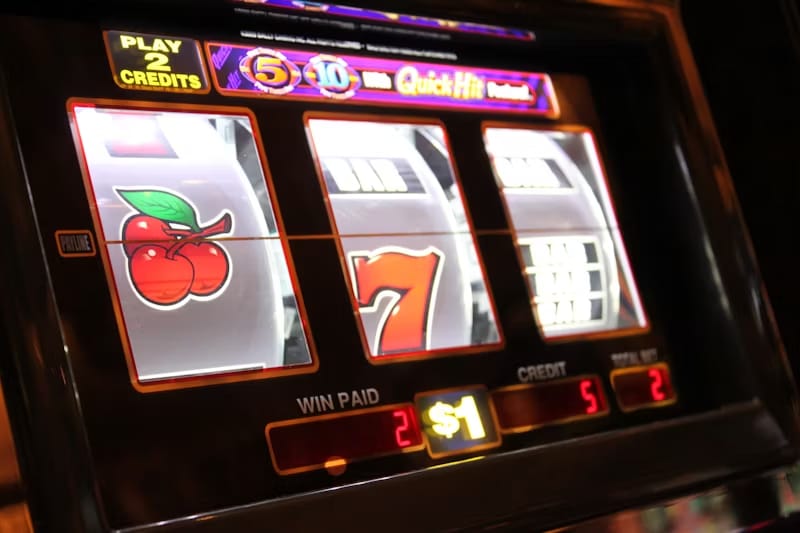- Aeviva
- Posts
- Modern Dopamine Traps
Modern Dopamine Traps
Why gambling and Instagram trigger the same addictive brain response
You check Instagram for just a second. Ten minutes disappear. You’re not even sure what you saw. You close the app feeling a little drained and yet still tempted to go back. Why?
This is not laziness or poor focus. It’s your dopamine system doing exactly what it was built to do. Social media apps are designed to trigger the same neurochemical response that gambling does. The same reward loop that makes people sit at slot machines for hours is now coded into your feed. And your brain is falling for it.
In this issue, we’ll unpack the neuroscience behind digital habits, what these constant dopamine traps are doing to your motivation and mood, and how to escape the loop without quitting your phone entirely.
Organizations that need security choose Proton Pass
Proton Pass Business is the secure, streamlined way to manage team credentials. Trusted by over 50,000 businesses worldwide, Pass was developed by the creators of Proton Mail and SimpleLogin and featured in TechCrunch and The Verge.
From startups to nonprofits, teams rely on Proton Pass to:
Share passwords safely with end-to-end encryption
Manage access with admin controls and activity logs
Enforce strong password policies with built-in 2FA
Revoke access instantly during employee turnover
Simplify onboarding and offboarding across departments
Whether you're running IT for a global team or just want Daryl in accounting to stop using “password123,” Proton Pass helps you stay compliant, efficient, and secure — no training required.
Join the 50,000+ businesses who already trust Proton.
The Casino Blueprint Behind Your Feed
Slot machines use a technique called variable reward. You don’t win every time. You don’t know when the next win will come. That uncertainty activates dopamine in a more powerful way than a guaranteed outcome ever could.
Instagram and TikTok follow the exact same principle. You scroll through mostly average content until something hits — a post that makes you laugh, a like that feels validating, a reel that hooks your attention. Your brain receives a hit of dopamine. Not because the post is amazing, but because it arrived unpredictably.

Fun fact: In lab experiments, rats will press a lever far more frequently when the reward is inconsistent than when it’s guaranteed. Human brains behave the same way. Variable reward is the most addictive reinforcement schedule known.
The Hidden Cost of Endless Dopamine Spikes
With every scroll, your dopamine system gets a small hit. Over time, your baseline shifts. You begin to need more stimulation just to feel neutral. The brain adapts to the flood of input by lowering sensitivity.
This is called dopamine adaptation. And it’s why even short scrolling sessions can leave you feeling foggy, unmotivated, or restless. You’ve trained your brain to expect quick novelty, and now slow, real-world rewards feel flat.
Did you know? In a 2021 brain imaging study, participants using Instagram showed increased activity in the same striatal regions that light up during gambling tasks.
Why This Feels Harder to Quit Than It Should
These apps don’t just give you rewards. They make them feel earned. You have to scroll, swipe, tap, and wait. It feels interactive. Your brain interprets that action as effort, which makes the dopamine reward feel legitimate — even when the outcome has no real-world value.
You’re not weak. You’re neurologically engaged in a reward cycle that bypasses conscious decision-making. And since it mimics ancient hunting and foraging behavior, it feels normal.

What It’s Doing to Your Mind Over Time
You become less tolerant of boredom
You crave stimulation during any quiet moment
You struggle to enjoy slow, effort-based rewards
Work and learning feel harder
Your mood becomes more dependent on artificial novelty
Sleep becomes disrupted from overstimulation and blue light
This is not addiction in the clinical sense, but it is deep behavioral conditioning. The more often the loop repeats, the more it reinforces itself.
Seeking impartial news? Meet 1440.
Every day, 3.5 million readers turn to 1440 for their factual news. We sift through 100+ sources to bring you a complete summary of politics, global events, business, and culture, all in a brief 5-minute email. Enjoy an impartial news experience.
✅ Self Check: Are You Caught in a Dopamine Trap?
Score yourself from 1 to 5 on the following (1 = never, 5 = always):
I open Instagram or TikTok without realizing it
I feel mentally tired after short scroll sessions
I check my phone during shows, meals, or conversations
I get anxious when I can’t check notifications
I find it harder to stay focused on slow tasks like reading
Total your score. If you're above 15, your brain may be relying heavily on short-form stimulation.
Modern dopamine traps don’t look like vices. They look like apps, alerts, and feeds that seem harmless. But they hijack reward systems in subtle ways that leave you less focused, less present, and more chemically drained.
You don’t need to quit everything. But even small changes help. Turn off autoplay. Set timers. Replace one scroll break with a walk, breathwork, or slow music. Rebuild the connection between effort and reward. Because your brain still wants to work for things — it just forgot how.
Take-Home Summary
Social media apps use the same reward mechanics as gambling to keep you hooked
Variable rewards create powerful dopamine loops that are hard to resist
Over time, this reduces your brain's sensitivity to real-life effort and reward
Dopamine adaptation leads to mental fatigue, low motivation, and poor focus
You don’t need to quit entirely — but breaking the loop starts with small daily changes
Deliberate habits like movement, deep focus work, and offline time help reset dopamine balance


Reply